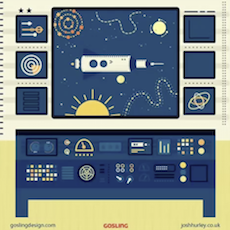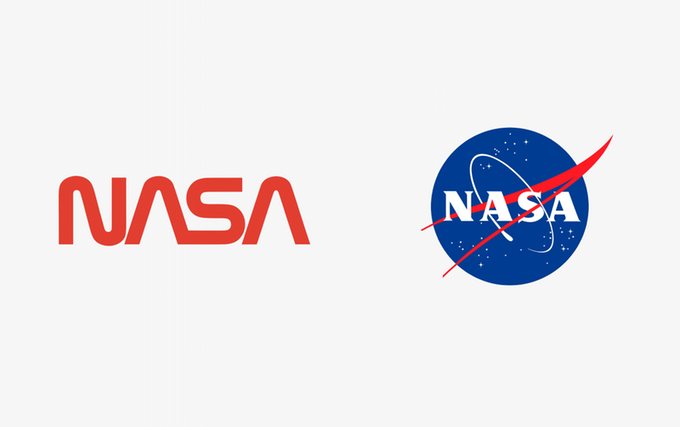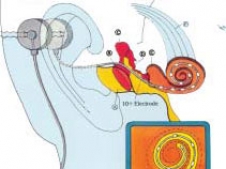It’s World Space Week, an “international celebration of science and technology, and their contribution to the betterment of the human condition.” We loved the sound of this, so much so that to celebrate, one of our resident illustrators Josh Hurley made this cosmic little gif and when we tweeted it to the world it got an unexpected amount of attention!
.@JoshHDraws made this cosmic gif to celebrate @WorldSpaceWeek. We think it’s out of this world! #wsw2015pic.twitter.com/R2G1Uva7xC
— Gosling (@goslingdesign) October 5, 2015
Space has always been a prevalent theme within popular culture, but recently emotional storytelling, super-real visual content and our ever closer proximity to technology has made life in space feel perhaps closer than ever before – take some of the biggest Hollywood blockbusters of the last two years: Gravity, Interstellar and the new Ridley Scott picture, The Martian, which design consultancy Territory worked on with NASA to design screen graphics and the 30-years-into-the-future user interface.
It all got the studio thinking deeper about the innovation of science and the part it plays in “the betterment of the human condition” – particularly in the healthcare sector, for which a lot of our brand design and communications work is done. NASA once wrote an article on the spin-offs of space design and technology. It reveals NASA’s connections to our everyday lives, which we were never aware of before. For instance, who knew that a silicon chip originally developed for NASA’s Hubble Space Telescope now makes breast cancer screenings less painful, less scarring, and less expensive than the traditional biopsy?
There’s also a great story about Adam Kissiah, who had no medical training whatsoever but used his expertise as an electronics instrumentation engineer at NASA’s Kennedy Space Center to develop the cochlear implant, a device that has restored hearing and allowed those born deaf to hear for the first time.
Perhaps even more fascinating is the story of NASA researcher Dr Rafat Ansari, whose work on small particles suspended in liquids resulted in the creation of an instrument that can help detect cataracts and other eye diseases, diabetes and possibly even Alzheimer’s. It’s a favourite of Dr Howard Ross, whose job title is so long we’re shortening it to Deputy Administrator for Science at NASA. He says: “What we do in space is much more than just science. We really do inspire people and change lives, and create new technology that goes far beyond the boundaries of just pure science.”
And we couldn’t agree more. We can’t wait to see how much further NASA can go to create real change in our lives through new technologies and great science, and in the meantime we’ll continue to be inspired by NASA’s innovation in our own work here at Gosling.




Recent Comments